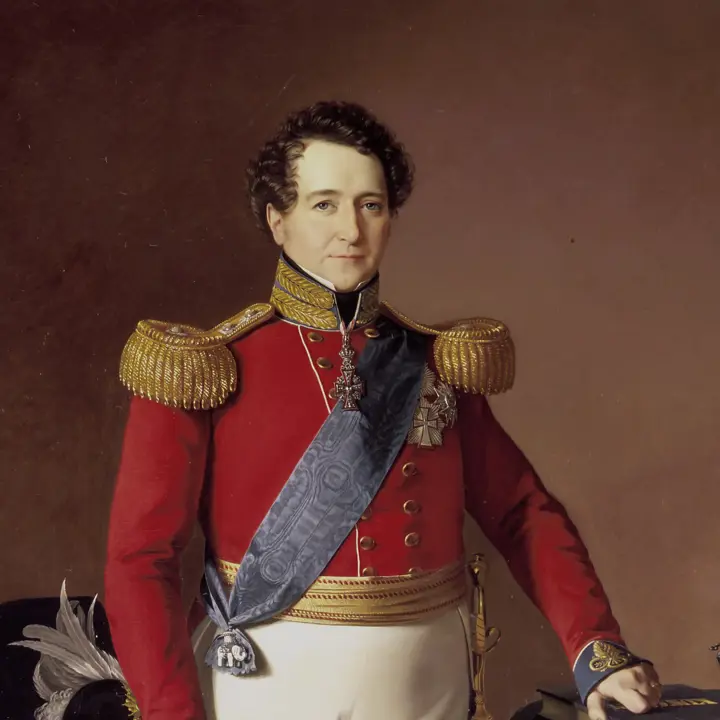
Christian VIII
Frederik VII was the son of Christian VIII.

Frederik VII had only been absolute king for a year and a half when he signed the Danish Constitution in 1849. Still, he managed to find a place for the monarchy in the new, democratic world.
The signature on the Constitution
As the son of Christian VIII and Charlotte Frederikke of Mecklenburg-Schwerin, Frederik VII was the last prince to become absolute king. Frederik VII led a debauched life while he was crown prince. This fuelled the efforts to abolish the absolute monarchy, and the year after his accession to the throne, in 1849, Denmark became a constitutional monarchy, when the King signed the Danish Constitution, on 5. June 1849.
Despite his unstable character and his marriage to a non-royal consort, Countess Danner, Frederik VII nevertheless managed to lead the country into a new era and to find a place for the monarchy in the new constitutional system of government. When the King died, in 1863, the renowned Danish fairy-tale writer Hans Christian Andersen thus wrote in his journal, 'The entire day, I have been languid, doing nothing; felt sick, wrecked, exhausted. The mood in the city is not good; wrote a poem about King Frederik the Seventh.' The King was clearly significant to people such as Hans Christian Andersen, as his reign gave them the opportunity to influence society when he put his signature on the Constitution..
Third time lucky
Frederik VII married three times. His first marriage was to Princess Vilhelmine, the daughter of Frederik VI. This marriage soon proved to be unhappy, in part due to Frederik's infidelity, and the couple divorced in 1838. In 1841, he entered into his second marriage, to Mariane of Mecklenburg-Strelitz. This time was no different, however, as Frederik initiated an affair with Louise Rasmussen. Mariane left, and it soon became clear that the King's bond with Louise Rasmussen was more than a fling.
Louise, who later became known as Countess Danner, had become indispensable to Frederik, and it was clear that he found it difficult to live up to the demand for finding a royal spouse, which led to considerations of amending the Constitution. Louise Rasmussen was not a royal. She was the daughter of a poor domestic servant from Copenhagen, and to make matters worse, in her youth, she had a child out of wedlock. The couple married in 1850, but as it was a so-called morganatic marriage, Louise could never become queen. Instead, she was given the title of Countess Danner.
Frederik VII's marriage to Louise Rasmussen sparked opposition from the upper middle classes, but the couple were popular among the rural population. The King saw it as his principal duty to gain broad official recognition for his wife. However, his efforts failed.